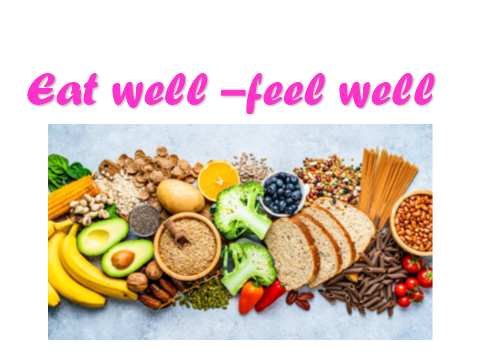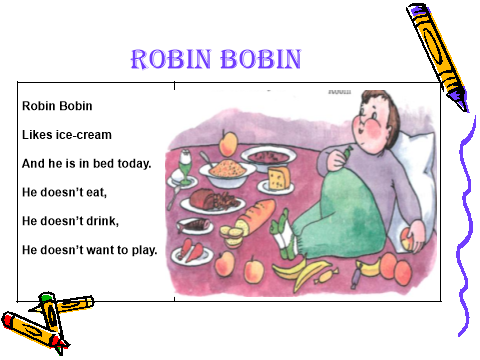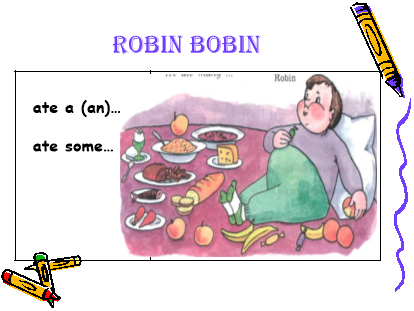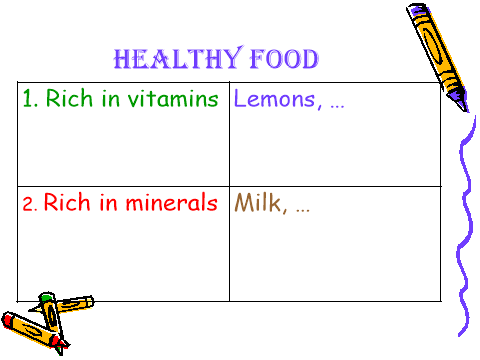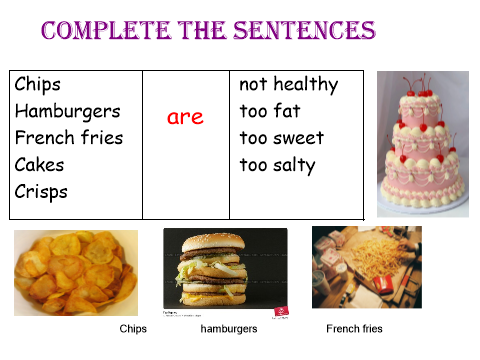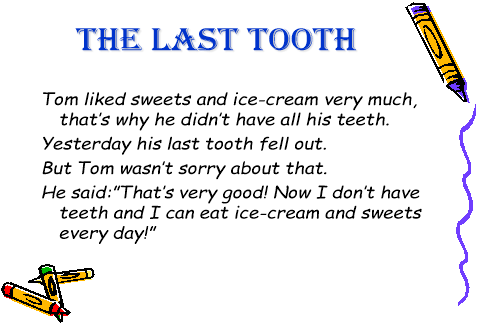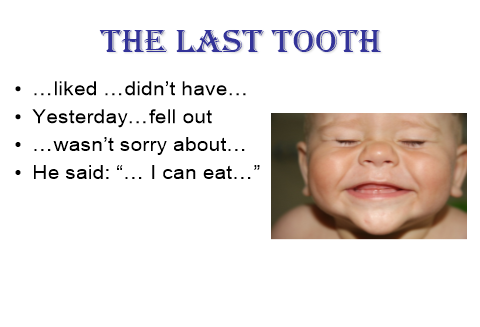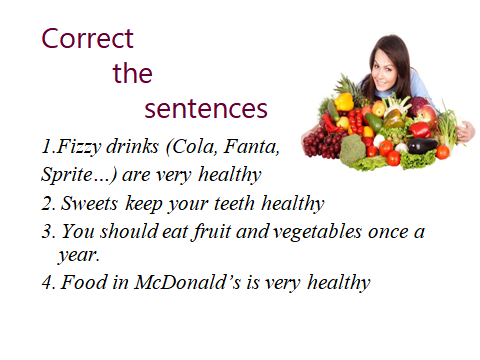Eat Well - Feel Well
THEME: EAT WELL – FEEL WELL
Aim: to revise and enrich students’ vocabulary and to broaden students’ knowledge of the topic “Healthy Food”
to provide opportunities for developing speaking, reading, acting and listening skills
to develop students’ logical thinking, cognitive and creative skills
to bring up culture of communication
Equipment: textbook English 5 by Oksana Karpyuk and Kristina Karpyuk, presentation, microphone, the access to the online wordwall service (quiz ‘Food’ https://wordwall.net/ru/resource/2999725), the board Padlet for sending the homework
Procedure:
1 Greeting and introduction to the topic. (slide #1)
Today the topic of our lesson is “Food”. We will talk about good food and the food which is not very good for us
|
|
2. Warm –up (Speaking)
a) Let’s look at the pictures on page 44. There are a lot of tasty things there: spaghetti, chocolate, cocoa and others. Look at the pictures again and tell me what dishes you like. For example, I like salad very much and I like drinking cocoa too. And what about you?
3. Speaking
Can you guess the name of one of the dishes in the pictures?
It is made of tomatoes and cucumbers. (salad)
It is brown and sweet (chocolate)
We can drink it with lemon or milk.(tea)
We usually eat it for dinner.(soup)
Many people like eating them with jam (pancakes)
4. Vocabulary (slide #2)
Look at the picture of this boy. His name is Robin Bobin. What do you think about him? Does he like eating very much? … Yes, he likes eating very much and he is rather fat. Let’s read a poem about him, translate it and may be somebody can already retell it.
|
|
5. Game. Speaking and grammar (wordwall )
a) Robin Bobin eats a lot. We can see a lot of tasty things in the picture. But if we want to speak like real Englishmen we must remember that some nouns are countable and some nouns are uncomfortable. Let’s play. Name the food in the picture and choose the right option. (Quiz – some/ any / a / an
https://wordwall.net/ru/resource/2999725)
b) Look at the picture of Robin again and complete the sentences. (slide #3)
|
|
Is Robin a sporty boy? Is Robin a healthy boy (здоровий хлопчик)? Why do you think so?
5. Reading and writing
Pre-reading activity. Vocabulary. (slide # 4)
Now we will read the text and learn what to eat to be healthy and nice. But first, look at the new words on page 45. They are also on our screen with the translation. Let’s read them together and try to learn them by heart
|
|
While-reading activities. Reading and writing. (slide #5)
The children read the text (ex1 p 45) one by one and complete the table in their exercise-books.
|
|
Post-reading activities. Reading and speaking
The children finish completing the table, read the results and answer some additional questions:
Why do people need vitamins?
Why are minerals important?
How much water must people drink?
What is the most important meal of the day?
6. Work in pairs. Making up short dialogues (slide #6)
a) I’m sure that you like eating healthy food. Look at the screen and make up the dialogue. Tell each other what you like eating and why. Then we will listen some of you.
|
|
b) Game “Microphone”
I have a microphone in my hand. Who wants to be a journalist and interview the other students about their eating habits?
7. Listening and speaking.
Pre-listening activities (slide #7)
Now we know about good food. And look at the screen. What food is unhealthy and why? Make up the sentences.
|
|
While-listening activities (slide #8)
And what will happen if you eat unhealthy food?
Look at the screen and read and listen to the story about poor Tom. Be ready to retell it.
|
|
Post- listening activities. Retelling (slide #9)
Look at Tom! Who can tell me about poor silly Tom again?
|
|
8. Homework. (slide #10)
I am so happy that you don’t eat so many sweets as Tom and you have your teeth. At home you should learn the new words on page 45, complete the sentences of ex 2 p 45 and do the additional task: write in English the food you see in the slide in 2 columns healthy/ unhealthy. This slide and the new words you will find on Padlet.
|
|
9. Summarizing. (slide #11)
And now let’s make the conclusion. Look at these sentences and correct them.
|
|


про публікацію авторської розробки
Додати розробку

